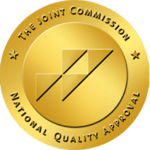When it comes to the use and abuse of drugs, there are several terms that are often used interchangeably but actually have distinct meanings. Understanding the difference between drug tolerance, drug dependence, and drug addiction is crucial when it comes to comprehending the complex nature of drug use and its consequences for individuals. While all three terms are related to drug use, they represent separate aspects that contribute to the development and progression of substance abuse disorders.
What is Tolerance?
Tolerance is a physiological and psychological phenomenon that occurs when an individual needs higher doses of a substance to achieve the same result or experiences reduced effects after repeated use. While commonly associated with drug use, tolerance can also manifest in various other contexts. It can also occur with medications prescribed for legitimate medical purposes. For individuals struggling with drug addiction, understanding and addressing tolerance is a crucial aspect of the recovery process.
Tolerance arises as a consequence of the body’s adaptation to a particular substance. With prolonged usage, the body develops mechanisms to counteract its effects, resulting in a diminished response to the substance. This adaptation may involve changes in receptor sensitivity, increased metabolic processing or elimination of the substance, or alterations in brain chemistry.
Drug tolerance can be observed with both legal and illegal substances. For instance, individuals who regularly consume alcohol may require larger quantities to attain the same level of intoxication.
Similarly, individuals taking prescription medications such as painkillers or antidepressants may need to take higher doses over time to achieve the desired therapeutic effect. In terms of illicit drugs, repeated use of substances like opioids, cocaine, or cannabis can lead to tolerance and subsequently demand increased dosages to obtain the desired euphoric state.
The signs and symptoms of tolerance can vary depending on the specific substance involved, but there are common patterns that may indicate the development of tolerance.
- Reduced Effects: Individuals may experience a diminished response to the same dose of a substance over time. This means that they may not feel the desired effects as strongly as they did initially and may need to take higher doses of the substance. This is a clear indicator of the development of tolerance.
- Faster Metabolism: Tolerance can be associated with changes in the body’s metabolism of the substance. The drug may be broken down more rapidly, leading to a shorter duration of action and a need for more frequent doses.
- Withdrawal Symptoms: Tolerance and dependence often go hand in hand. If a person has developed tolerance to a substance, they may also experience withdrawal symptoms when the drug is not taken. This can include irritability, anxiety, nausea, and other physical or psychological symptoms.
- Increased Frequency of Use: Someone developing tolerance may find themselves using the substance more frequently than before to maintain the desired effects.
- Loss of Control: Tolerance can contribute to a loss of control over drug use, as individuals may continue to increase their intake in an attempt to achieve the desired effects, despite negative consequences.
If you suspect that someone is experiencing tolerance to a substance, it’s crucial to seek professional help and guidance, as this could be an early indicator of developing a substance use disorder or addiction.
What’s the Difference Between Dependence and Addiction?
Dependence and addiction are related concepts, but they refer to different aspects of substance use. Understanding the distinctions between dependence and addiction is important for accurately addressing and treating substance-related issues.
What’s the Difference Between Dependence and Addiction?
Dependence and addiction are related concepts, but they refer to different aspects of substance use. Understanding the distinctions between dependence and addiction is important for accurately addressing and treating substance-related issues.
Dependence
Physical dependence is a phenomenon where the body adjusts to the regular presence of a substance and deems it necessary for normal functioning. This adaptation can result in the development of tolerance, where higher doses are needed for the same effect and the emergence of withdrawal symptoms when the substance is reduced or stopped.
The intensity of withdrawal symptoms can differ, yet individuals often undergo both physical and psychological alterations. Typical physical manifestations involve headaches, nausea, tremors, sweating, dizziness, chest pain, heart palpitations, fatigue, insomnia, and loss of appetite. On the psychological front, withdrawal may include symptoms such as anxiety, depression, irritability, and agitation.
It is important to note that dependence itself does not necessarily indicate addictive behavior. For example, an individual may be physically dependent on a medication prescribed by a doctor but may not engage in compulsive drug-seeking behavior.
Addiction
Addiction is a multifaceted phenomenon with both physical and psychological components. Beyond the physical dependence on a substance, there is a significant psychological component characterized by compulsive drug-seeking behavior, a loss of control over substance use, and an intense craving for the drug.
A hallmark of addiction is the profound difficulty individuals face in controlling their substance use despite being fully aware of the adverse consequences. This loss of control persists, further evidenced by the continuation of substance use even in the face of harm to one’s physical health, mental well-being, relationships, and other aspects of life.
Additionally, individuals grappling with addiction often experience obsessive thoughts about obtaining and using the substance, leading to repetitive and compulsive behaviors aimed at satisfying these cravings. Consequently, addiction can have a pervasive impact on daily life, causing significant interference with responsibilities at work, home, and in relationships, ultimately resulting in a decline in overall functioning.
What are the Indicators that Tolerance or Dependence Has Progressed to Addiction?
The progression from tolerance or dependence to addiction is not always apparent, but certain signs can indicate the transition. It’s crucial to be aware of these signs to identify potential issues early on.
- Misuse of Prescription Medications. Taking prescription drugs, like pain relievers or anxiety medications, even when they are no longer necessary
- Increased Tolerance. Needing higher doses at more frequent intervals to achieve the same effects
- Constant Thoughts About Drugs. Obsessively thinking about obtaining and consuming drugs, along with planning how to secure more
- Secrecy and Deception. Hiding drug use and its impact is often accompanied by lying and stealing to maintain the habit
- Engaging in Risky Behavior. Taking dangerous risks, such as driving under the influence of drugs
- Withdrawal Symptoms. Facing intense withdrawal effects when unable to administer a dose
- Loss of Interest and Functionality. Losing interest in once-enjoyable activities and facing difficulties in maintaining work or school commitments
Understanding Risk Factors
While addiction can affect anyone, certain factors can increase the likelihood of developing a substance use disorder. Recognizing these risk factors is essential for prevention and early intervention.
- A family history of addiction, especially if a sibling or parent is affected, can increase the susceptibility.
- Mental Health Conditions. Conditions like depression, ADHD, or PTSD may lead individuals to use substances as a coping mechanism.
- Early Onset of Substance Use. Starting drug use during adolescence, when the brain is still developing, can heighten the risk of addiction.
- Highly Addictive Substances. Drugs with high addictive potential, such as cocaine, opioids, and stimulants, can lead to addiction more rapidly.
- Peer Pressure. Succumbing to peer pressure during social situations, especially in adolescence, may drive individuals to experiment with addictive substances.
- Challenging Family Environment. Children without proper supervision may turn to drugs to cope with negative emotions or fit in with their peers.
- Traumatic Experiences. Individuals who have experienced trauma, whether physical, emotional, or sexual, may be at an increased risk of developing substance use disorders as a way to cope with the aftermath of these experiences.
What are the Treatment Options Offered at Westwind Recovery® in Los Angeles, CA?
Treating addiction typically includes a mix of medical intervention, counseling, support groups, and adjustments to one’s lifestyle. The choice of treatment depends on the type of addiction, the severity of the problem, the individual’s health, and other factors.
At Westwind Recovery®, individuals can access a comprehensive range of addiction treatment services tailored to their unique needs. These may include:
- Detoxification Services. Assisting individuals in safely managing withdrawal symptoms during the initial phase of recovery.
- Residential Treatment Programs. Providing structured and supportive living environments for individuals requiring intensive treatment and 24/7 care.
- Partial Hospitalization Programs (PHP). Offering comprehensive daytime treatment while allowing individuals to return home in the evenings.
- Intensive Outpatient Programs (IOP). Providing a less intensive but still structured form of treatment for individuals who do not require 24/7 care.
- Outpatient Programs. Offering flexible treatment options that allow individuals to receive support while maintaining their daily routines.
- Therapy and Counseling. Utilizing various therapeutic modalities such as individual counseling, group therapy, and family therapy to address underlying issues.
- Dual Diagnosis Treatment. Addressing co-occurring mental health disorders alongside substance abuse issues.
- Holistic and Alternative Therapies. Including practices such as yoga, meditation, art therapy, and fitness programs to enhance overall well-being.
- Aftercare Planning. Assisting individuals in developing a plan for continued support and relapse prevention after completing formal treatment.
If you or someone you know is struggling with addiction, Westwind Recovery® is here to help. Our experienced team can assist with various types of addiction through personalized treatment plans. Embark on the path to recovery and contact us today. Begin your journey to a healthier, happier life today.

Dr. Deena is the Chief Clinical Officer of Westwind Recovery®, an award-winning outpatient treatment center in Los Angeles where she oversees the clinical and administrative program and treatment methods. Dr. Deena is a doctor of psychology and licensed clinical social worker since 1993. LCSW #20628. Originally from the East Coast, Dr. Deena has worked running treatment centers, worked as a therapist in psychiatric hospitals as well as school settings and currently has a thriving private practice in the LA area. Dr. Deena has appeared regularly on the Dr. Phil Show as an expert since 2003. She has also been featured on many other TV shows, podcasts and has contributed to written publications as well as podcasts.





